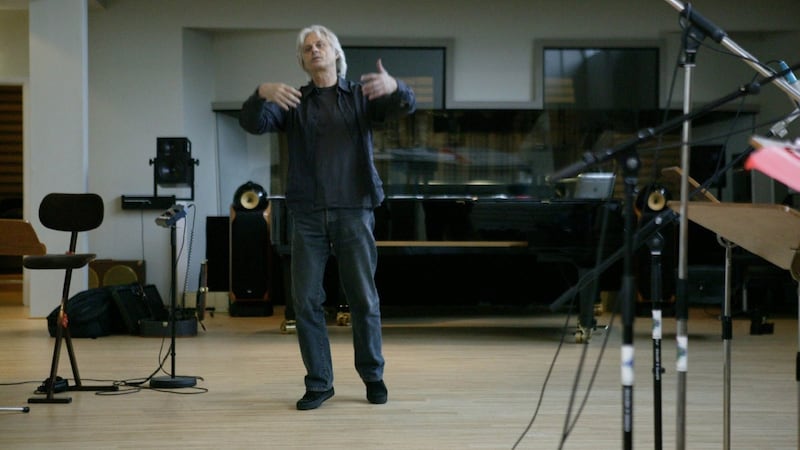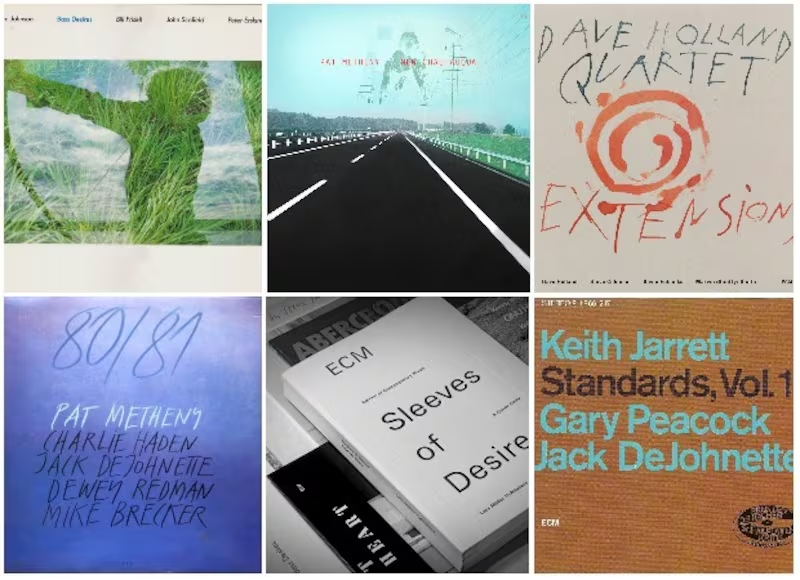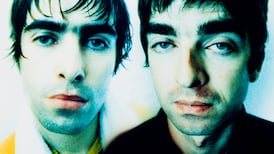Cracking open a new ECM release is always a pleasurable experience. The legendary Munich label’s attention to detail – from the inscrutable packaging and innovative use of photography to the meticulous sound quality of the recordings – has singled ECM out and made those three letters almost a genre unto itself.
The recent announcement that the label’s entire catalogue – a treasure trove of some 1,500 albums, including some of the most famous and influential recordings in jazz and contemporary classical music – will now be available on streaming and download platforms will not have been greeted with unalloyed joy by its hardcore devotees.
Since its founding in 1969, the ECM model has always been one that put artists’ intentions and optimal recording techniques at the centre of its practice, often at the expense of commercial viability. The label was one of the last holdouts of the digital age, insisting that listeners access its music through CDs or vinyl.
Neither, one suspects, will the new digital distribution deal with Universal Music Group have been made without misgivings by the label’s founder, Manfred Eicher.
The new deal makes the ECM catalogue available on Apple Music, Amazon, Spotify, Deezer, Tidal and Qobuz. ECM did not respond directly to questions put to it by The Irish Times last week, but speaking to this newspaper in 2015, Eicher was withering about streaming and downloads, fearing that his carefully arranged albums would be reduced to selected highlights.
“It’s a very important quality how to choose, how to select and what kind of sequence you are making,” he told me then, during an ECM recording session in Lugano, Switzerland.
“Whether you are starting with this piece or that piece, it’s a big difference. And of course, in the digital time, everything is divided. When you think about Spotify and streaming and all those kinds of things, you can get every track, you can get every movement from a symphony [separately] but what is that? I want to have the content, the content is the most important, you have to have also the idea of the musicians and the producer presented in its original form.
A well-thought idea
“It means if you make a record you can be sure and trust that the sequence that you hear records a well-thought idea. This is very important. If you write a novel, you start and you finish, you don’t scramble around with the pages. If you make a film, you make an edit and it’s released that way. Music is the only kind of thing in the digital time where everything is switched around, and the album form is no longer intact, you know, and I believe this is a very important message also about story-telling.”

In many ways, the move will be seen as inevitable if ECM is to keep pace with a new generation of listeners. There is a fear that for a large cohort under 30, who have grown up with the streaming and download model, the label’s catalogue is either obscure or unheard of.
In a statement announcing the move, ECM said that “although ECM’s preferred mediums remain the CD and LP, the first priority is that the music should be heard. The physical catalogue and the original authorship are the crucial references for us: the complete ECM album with its artistic signature, best-possible sound quality, sequence and dramaturgy intact, telling its story from beginning to end.
“In recent years, ECM and the musicians have had to face unauthorised streaming of recordings via video-sharing sites, plus piracy, bootlegs, and a proliferation of illegal download sites. It was important to make the catalogue accessible within a framework where copyrights are respected.”
Whether the move will be welcomed by its artists is another question. One prominent ECM artist told The Irish Times that the move was not made known to him beforehand, and he says there is a fear, common among creative musicians in general, that the already minimal income streams from recordings will be further eroded.
What is clear, and clearly a cause for celebration, is that a new generation of listeners will now be inducted into the wide-eared world of ECM. The label’s output runs from landmark jazz recordings to innovative world music collaborations to groundbreaking contemporary classical releases.
Although ECM is often seen as a bastion of European art music, the label has also provided an important outlet for senior American jazz musicians who were often overlooked, or considered commercially unviable, by US labels. Major innovators such as Keith Jarrett, Pat Metheny, Paul Bley, Dave Holland and Chick Corea have all found a home at ECM over the years, and still today, Eicher’s ears are always straining for new and original music makers.
The art of ECM
ECM’s covers are works of art, no less than the recordings they contain. Since the very beginning, the label has adopted an inscrutability that seems to run counter to any conventional idea of music marketing, wrapping its releases in packages that ask more questions than they answer.
Books have been written, exhibitions have been mounted and obsessive collectors have coveted ECM albums in a way few other record labels can boast. If ECM’s motto about its music is “the most beautiful sound next to silence”, then its album covers are the visual expression of that idea, beautiful but unfathomable, like attenuated figures glimpsed at a distance.

Designer Barbara Wojirsch's cover for Keith Jarrett's Standard's Vol. 1 (1983) is a classic of the label's austere approach, the guileless, almost brutalist Helvetica typography giving no hint of the joyous music it contained, while her hand-drawn covers for Pat Metheny's 80/81 (1980) and Dave Holland's Extensions (1990) are more organic, like playful exercises in the potential of language to obscure meaning.
Designer and photographer Dieter Rehm's covers for the label, like his design for Pat Metheny's New Chautauqua (1979) or Marc Johnson's Bass Desires (1986) featured photography that often sparked unexpected associations and dissonances, as if avoiding anything that might prejudice the listener to its contents.
Like the label’s approach to sound, many have talked about the ECM graphic style, but to imagine that there was a “house style” would be to miss the deliberate way in which the label has avoided a corporate identity.
Writing in Sleeves of Desire, the book which accompanied a touring exhibition of ECM album covers in 1996, ECM's in-house wordsmith Steve Lake wrote "no one at ECM, to my knowledge, has ever wasted a moment trying to fabricate a 'corporate identity' for the label. If a recognisable 'style' – or complex of styles – has emerged, it has emerged by following the music… the album design is less an afterthought than the final stage of production."
ECM: 15 of the best to stream now
Keith Jarrett: Facing You (ECM 1017, 1971)
US Pianist Keith Jarrett's first solo album is an astonishing outpouring of spontaneous melody, and marked the beginning of a recording relationship that continues to this day, extending to over 80 recordings.
Keith Jarrett, Jan Garbarek, Palle Danielsson and Jon Christensen: Belonging (ECM 1050, 1974)
The first meeting of Jarrett's 'European' quartet exemplifies producer Manfred Eicher's instinct for collaboration: for many (including this correspondent), Belonging is one of the most joyously perfect recordings in the ECM catalogue.
Steve Reich: Music for 18 Musicians (ECM 1129, 1978)
A seminal work of minimalism from the great American composer, and a harbinger of ECM's later move into contemporary composed music with its New Series.
Pat Metheny: 80/81 (ECM 1180/1181, 1980)
Starting with his debut, Bright Size Life, guitarist Pat Metheny made a string of groundbreaking recordings with ECM, including this towering double album with a mouthwatering line-up of jazz heavyweights
Paul Motian Band: Psalm (ECM 1222, 1982)
Drummer Paul Motian's solo career started late, but with ECM, he was to become an important discoverer of new talent, including here the soon-to-be-famous guitarist Bill Frisell and saxophonist Joe Lovano.
Dave Holland: Seeds of Time (ECM 1292, 1982)
One of several ground-breaking recordings by the English bassist that helped to introduce odd meters to jazz and other jazz musicians to the hugely influential saxophonist Steve Coleman.
Arvo Pärt: Tabula Rasa (ECM New Series 1275, 1984)
The first release of ECM's now similarly influential classical imprint; Manfred Eicher heard the Estonian composer's minimalist masterpiece by chance on his car radio and decided he wanted to record it.
John Abercrombie: Current Events (ECM 1311, 1986)
The late John Abercrombie was one of the label's longest-standing artists, a guitarist whose subtlety and melodic imagination found a perfect home with ECM; check out the solo on Alice in Wonderland
Kenny Wheeler: Music for Large and Small Ensembles (ECM 1415/16, 1990)
Canadian trumpeter and composer Kenny Wheeler's great masterpiece, a sonorous congregation of trans-Atlantic talent, has grown in stature and importance over the years, becoming a virtual new testament for big band arrangers.
Jan Garbarek & the Hilliard Ensemble: Officium (ECM New Series 1523, 1994)
The Norwegian saxophonist remains ECM's most promiscuous and most prolific artist; this collaboration with the early music vocal quartet was a hit far beyond the ECM's usual audience
Nils Petter Molvaer: Khmer (ECM 1560, 1997)
A groundbreaking recording, which captures the first steps of what some have called 'future jazz', with Molvaer's ethereal trumpet soaring over beds of electronic noise and techno beats.
Tim Berne: Snakeoil (ECM 2234, 2012)
Lion of the New York 'downtown' scene, respected saxophonist and composer Tim Berne is another in a long line of American adventurers who have found a safe haven at ECM.
June Tabor/Iain Ballamy/Huw Warren: Quercus (ECM 2276, 2013)
English folk legend June Tabor's heartfelt singing, extending folk standards into new territories, sends shivers down the spine, with empathetic support from two of the London jazz scene's finest musicians.
Aaron Parks: Find the Way (ECM 2489, 2016)
Thirty-something Seattle pianist Aaron Parks is part of a new generation catching Eicher's ear, here making his second ECM recording with bassist Ben Street and veteran drummer Billy Hart
Anouar Brahem: Blue Maqams (ECM 2580, 2017)
Tunisian oud master Anouar Brahem's encounter with jazz heavyweights, bassist Dave Holland, drummer Jack De Johnette and English keyboard wizard Django Bates, is typical of Eicher's ability to bring unlikely groups together











